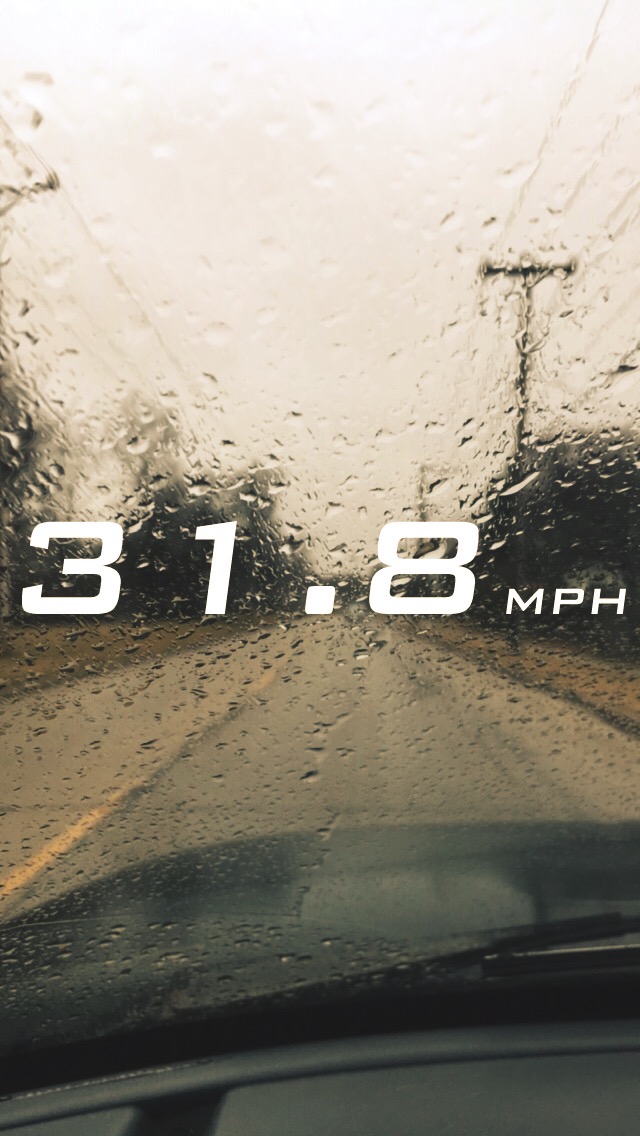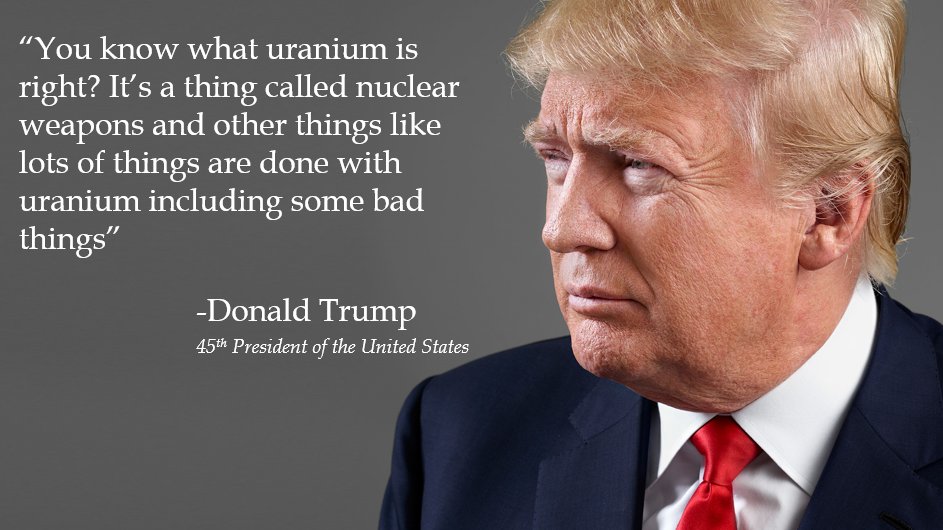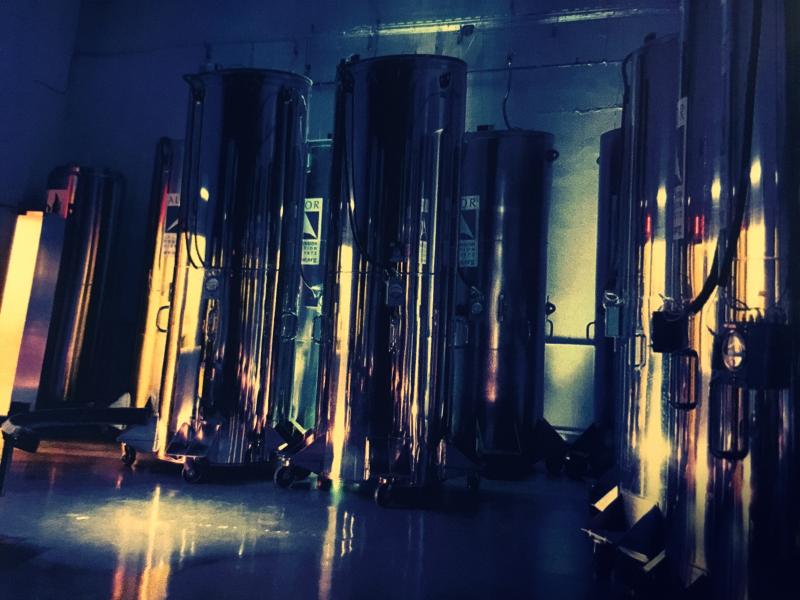
I’m driving home without using my windshield wipers, you know… just to see how well I do.
New to the site? Create an account →
 tcr!
· Feb 24, 2017 at 4:24 pm
tcr!
· Feb 24, 2017 at 4:24 pm

I’m driving home without using my windshield wipers, you know… just to see how well I do.
 tcr!
· Feb 24, 2017 at 3:21 pm
tcr!
· Feb 24, 2017 at 3:21 pm
We are also putting in a massive budget request for the military, and we will be substantially upgrading all of our defenses. It will be one of the greatest military buildups in American history. No one will dare to question our military might. We believe in Peace Through Strength.
Hope you get some uranium, too.
 tcr!
· Feb 24, 2017 at 1:33 pm
tcr!
· Feb 24, 2017 at 1:33 pm
I will sometimes reply to emails mistakenly sent to me…
--- Original Message --- From: Dietrich Bauer Date: February 24, 2017 at 1:10:15 PM CST Subject: Mühlenprojekt To: Heinz Bücker, Walter Bender, Joachim Jesch, Dr. Arne Esser, Frau Cremer Hallo zusammen, am kommenden Dienstag treffen wir uns bei Familie Jesch in Nideggen, Herzogstrasse 11 um 10:00 Uhr zu einem Gespräch über unser Mühlenprojekt. Frau Cremer kommt ebenfalls, Sie möchte gern mitmachen und hat den Besuch der Mühle in Abenden schon vorbereitet. Gruß aus Abenden Dietrich
Hello everybody,
Next Tuesday we meet at the Jesch family in Nideggen, Herzogstrasse 11 at 10:00 am for a talk about our mills project. Mrs. Cremer is coming too, she would like to join in and has already prepared the visit of the mill in evenings.
Greetings from evenings Dietrich
--- Original Message --- Date: February 24, 2017 at 1:32:49 PM CST Subject: Re: Mühlenprojekt To: Dietrich Bauer CC: Heinz Bücker, Walter Bender, Joachim Jesch, Dr. Arne Esser Hallo Dietrich und Bande, Ich kann eine MRT an diesem Tag haben und wenn nicht etwas schrecklich falsch ist (ihre Magnete waren ungewöhnlich instabil) würde ich immer noch gerne an der Mühlenprojektdiskussion teilnehmen. Können Sie bitte die Wegbeschreibung zur Herzogstrasse 11 aus Genf geben? Soll ich für Mühle gelegentlich oder Mühlengeschäft anziehen? Soll ich auch den Gorilla-Anzug mitbringen? 🦍 Vielen Dank. -Frau Cremer
Hello Dietrich and gang,
I may have an MRI that day and unless something goes horribly wrong (their magnets have been unusually unstable) I would still like to join the mills project discussion.
Could you please provide directions to Herzogstrasse 11 from Geneva?
Shall I dress for mill casual or mill business? Also, shall I bring the gorilla suit? 🦍
Thank you very much.
-Frau Cremer
 tcr!
· Feb 24, 2017 at 12:02 pm
tcr!
· Feb 24, 2017 at 12:02 pm

Host Kerri Miller breaks down the meaning of “alternative facts” and what the term means for the future of civil discourse and democracy in America.
There’s so much more in this episode than just alternative facts.
I made it easy for you to listen:
 tcr!
· Feb 24, 2017 at 10:04 am
tcr!
· Feb 24, 2017 at 10:04 am
Peeps, here’s some swing box for your Friday morning. Because somehow a tiger.
 tcr!
· Feb 24, 2017 at 9:38 am
tcr!
· Feb 24, 2017 at 9:38 am
 tcr!
· Feb 24, 2017 at 8:22 am
tcr!
· Feb 24, 2017 at 8:22 am

I don’t know if Trump actually said all of this about uranium but it’s pretty funny either way.
He’s in the running for Dubya’s position.
 tcr!
· Feb 23, 2017 at 6:43 pm
tcr!
· Feb 23, 2017 at 6:43 pm

From outside, the offices of America’s largest cryonic-freezing center are more befitting of Michael Scott from The Office than Philip K. Dick. Tucked away in a bland, blue-gray office park in Scottsdale, Arizona, Alcor Life Extension Foundation rests against a backdrop of a sienna-toned quilt of strip malls, ranch homes, gun clubs, and cacti stitched together with slabs of highway that seem as wide and endless as the sunset vistas. But, if I wanted to confer with frozen bodies and household pets, it turns out, I had to head to the desert.
Cryonics—the science of using sub-freezing temperatures to preserve people in the hope that resurrection may come in the future—is a pseudo Easter for atheists. Upon arriving in Alcor’s office, I counted myself among its skeptics. The nonprofit’s nine employees smiled as they buzzed amid shiny silver walls and framed photographs of the currently frozen, a sort of doctor’s office meets Deep Space Nine. Alcor has 149 bodies and heads stored at 300 degrees below zero, including a Chinese science-fiction author, a little girl from Thailand, and baseball icon Ted Williams, among others. (But not, representatives said, Walt Disney, contrary to popular belief.) And the foundation is looking to expand; more than 1,100 people, or “cryonauts,” have committed to doing the same deep freeze. About a quarter of them, Alcor says, work in technology, and most committed to the postmortem freeze in their 40s rather than their silver years, seeing the body as a hackable machine just in need of a future reboot.
I like the idea of cryonic freezing. I mean I’ll never be an astronaut so a cryonaut (as they’re called) sounds close enough.
However… I worry that some snooty hipster in the future will download my memories and then what?
It’s not like I’d be brought back to life, walking around, checking shit out in the future.
The science seems more to be just that my memories would be reviewable by some twit standing in judgement of all the times I threw french fries at my cat.
 jimi hindrance experience
· Feb 24, 2017 at 12:38 am
jimi hindrance experience
· Feb 24, 2017 at 12:38 am
Deckard: You’re reading a magazine. You come across a full-page nude photo of a girl.
Rachael: Is this testing whether I’m a replicant or a lesbian, Mr. Deckard?
 jimi hindrance experience
· Feb 24, 2017 at 12:39 am
jimi hindrance experience
· Feb 24, 2017 at 12:39 am
 tcr!
· Feb 23, 2017 at 6:09 pm
tcr!
· Feb 23, 2017 at 6:09 pm
Of course I loved David Duchovny in the X-Files and Californication…but his band, that was as bad as Keanu’s. 😖
← Newer Older → Page 301 of 622 Page 1 ← Page 11 ← Page 21 ← Page 31 ← Page 41 ← Page 51 ← Page 61 ← Page 71 ← Page 81 ← Page 91 ← Page 101 ← Page 111 ← Page 121 ← Page 131 ← Page 141 ← Page 151 ← Page 161 ← Page 171 ← Page 181 ← Page 191 ← Page 201 ← Page 211 ← Page 221 ← Page 231 ← Page 241 ← Page 251 ← Page 261 ← Page 271 ← Page 281 ← Page 291 Page 311 → Page 321 → Page 331 → Page 341 → Page 351 → Page 361 → Page 371 → Page 381 → Page 391 → Page 401 → Page 411 → Page 421 → Page 431 → Page 441 → Page 451 → Page 461 → Page 471 → Page 481 → Page 491 → Page 501 → Page 511 → Page 521 → Page 531 → Page 541 → Page 551 → Page 561 → Page 571 → Page 581 → Page 591 → Page 601 → Page 611 → Page 621 → Page 622
Add a comment
Post